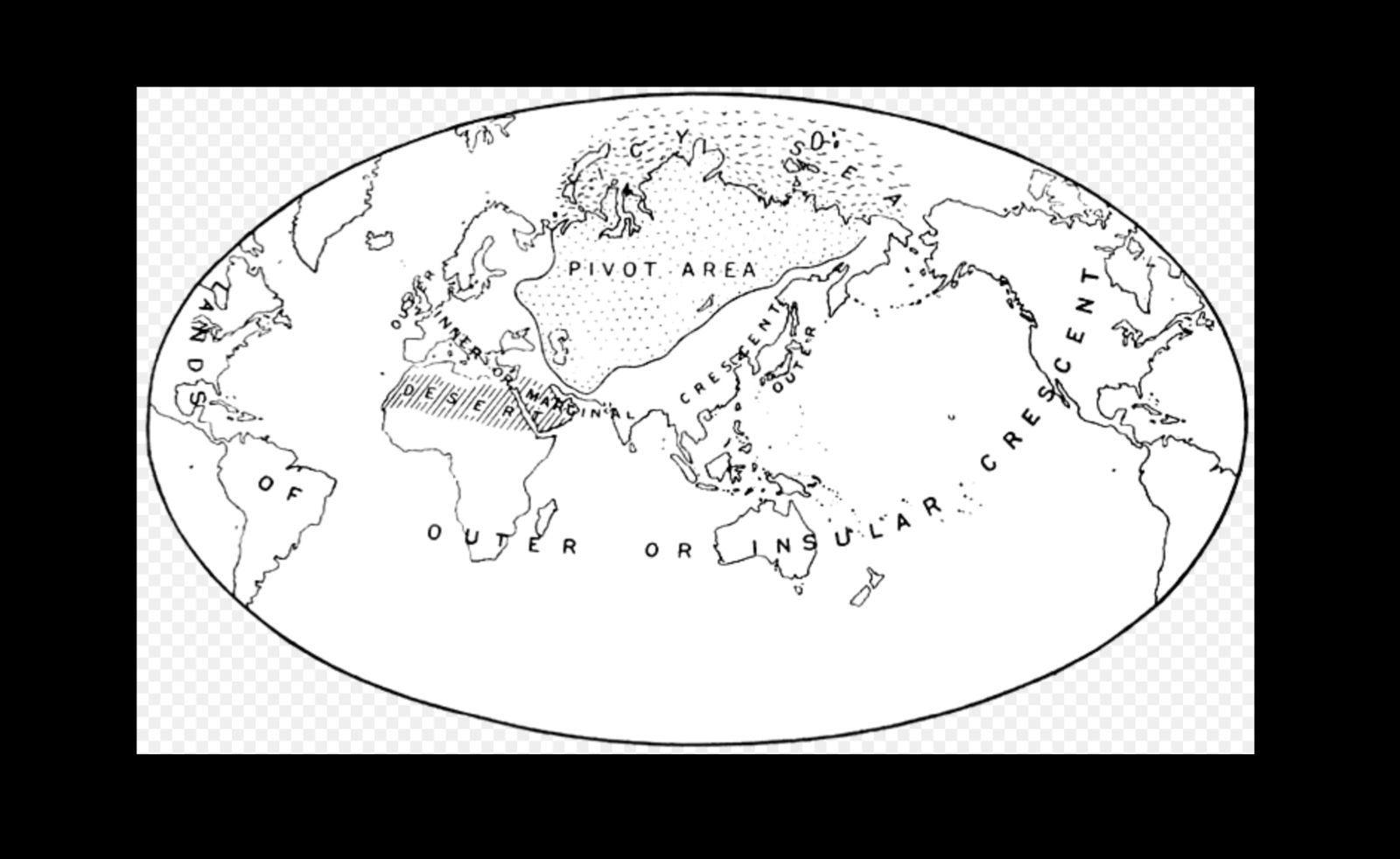
The John Batchelor Show
Photo: Map of the “Heartland Theory”, as published by Mackinder in 1904.
http://JohnBatchelorShow.com/contact
http://JohnBatchelorShow.com/schedules
Parler & Twitter: @BatchelorShow
http://JohnBatchelorShow.com/contact
http://JohnBatchelorShow.com/schedules
Parler & Twitter: @BatchelorShow
“Iranian Power Is Not Inevitable, ” 1of2: or The Lessons of Mackinder. Ian Morris, Stratfor.com
“…In the last 10,000 years, the world’s most developed societies have almost always been in the band of latitudes that Mackinder called Eurasia’s “inner rim,” running from the Mediterranean to China. Farming was invented in this area, with the Middle East leading the way around 9500 B.C. and the rest of the inner rim following its example over the next several thousand years. Along with farming came cities and governments, which most parts of the inner rim had developed by 500 B.C. Two hundred and fifty years later, the world’s first multiethnic empires comprising tens of millions of subjects controlled most of the inner rim.
Because ancient empires could not project their power very far, at any one time the inner rim tended to have four or five regional hegemons, jostling with each other but rarely extending their power into what Mackinder called Eurasia’s “outer rim,” facing toward the oceans, or its “heartland,” far from the seas. However, because Eurasia’s inner rim held 75 percent of the world’s population and 90 percent of its wealth, its imperial rivalries became the most significant issues in global geopolitics.
The planet’s balance of power began to change around 1000 B.C., when pastoral nomads on the steppes — the arid, treeless grasslands running from Manchuria to Hungary — first bred horses able to carry riders for long distances. These horsemen in the Eurasian heartland, far more mobile than the armies of the inner rim empires, were able to plunder almost at will and then gallop away before the imperial infantry could respond.
For the next 2,500 years, Eurasian history was dominated by a struggle between predators from the heartland — Scythians, Huns, Turks and Mongols, to name just a few — and the empires of the inner rim. China and Iran, which had relatively open frontiers along the steppes, were the regions most exposed to devastation, and their ruling dynasties were regularly overthrown by invaders. India and Europe, shielded by mountains and forests, generally suffered less.
The contest between the inner rim and the heartland was eventually overtaken by a new strategic struggle, which pitted the inner rim against the outer, after A.D. 1500. Mackinder labeled this new situation, which still prevailed in his own day, “the Columbian epoch.” The great shift was driven by two inventions, both of them pioneered in China but quickly adopted and adapted all along the inner rim. When the new inventions reached Europe, they merged to form a world-conquering package.
The first invention was the gun, which military men gradually improved upon until muskets could be fired fast enough to counter nomadic archers on horseback. In 1500, steppe cavalry could still normally defeat volleying infantry; in 1600, they could sometimes win the same victories. But by 1700, they hardly ever could. After that, riders from the heartland no longer seriously threatened the inner rim.
The second invention was the oceangoing ship, which could fairly reliably sail for thousands of miles. These ships transformed the balance between the inner and outer rims just as decisively as the gun had altered the dynamic between the inner rim and the heartland. Armed with the new ships and guns, outer rim states could now project power farther and strike harder than any civilization before. The Columbian epoch had arrived.
Thanks to their long coastlines, India and the western parts of the Ottoman Empire were the most exposed to outer rim sailors and their guns, while distance and difficulty of access made China and Iran less vulnerable. By 1600, Western Europeans had overrun much of the Americas, built dozens of fortresses around the shores…”
It looks like you are not a member of WABC VIP Club yet. Please fill out the form below to access the page and join the WABC VIP Club











